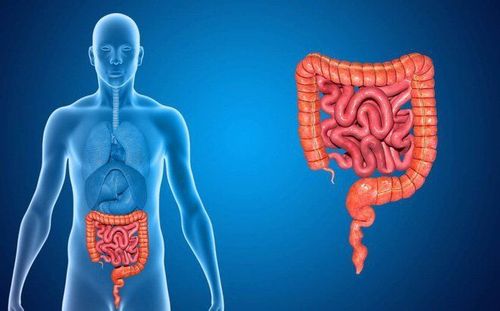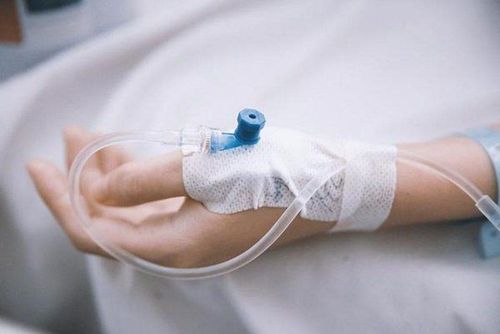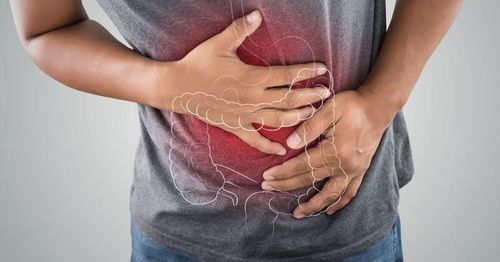This is an automatically translated article.
The article was written by Master - Doctor Mai Vien Phuong - Head of Gastrointestinal Endoscopy Unit - Department of Medical Examination and Internal Medicine - Vinmec Central Park International General Hospital.Postoperative gastrointestinal fistulas can occur after any abdominal procedure that involves the gastrointestinal tract. Regardless of the cause, leakage of intestinal fluid initiates a variety of conditions: Local infection, abscess formation, and fistula formation (considered as a consequence of centralized infection).
1. Gastrointestinal fistula from the intestine to the abdominal wall
1.1. Fistula injury
Internal hole: An internal hole located in the wall of the esophagus, stomach, duodenum, jejunum, colon, or rectum. Internal fistulas usually have 1, sometimes 2-3 holes. Fistulas can be small or very small, sometimes large or very large. When large, it can occupy the entire intestinal diameter. Through the internal fistula, part or all of the digestive juices from above the fistula through the abdominal wall drain out. Intestinal tissue around the internal foramen is stiff and firmly adhered to the abdominal wall. Fluids and substances contained in the lumen of the intestine through the inner lot through the fistula flow out, not into the abdominal cavity.Outer hole: The outer hole is located in the skin where the incision is made, usually 1, sometimes 2 - 3 holes. The outer hole is usually close to the inner hole. The external fistula is located in the anterior abdominal wall, the lateral abdominal wall, or sometimes posteriorly, in the anterior aspect of the thigh.
The surrounding skin is more or less damaged. Gastric fistula in the upper gastrointestinal tract; Due to the effect of acid in gastric juice, of digestive enzymes, the skin around the external fistula is reddened on a large or narrow area. Often, there is little pus around the external opening due to infection.
1.2. Leakage line
The fistula connects the internal foramen in the abdomen with the external foramen in the skin. The wall around the fistula is usually the abdominal wall or the chest wall. When the internal fistula is on a viscera located deep in the abdomen, not close to the abdominal wall, between the inner hole and the abdominal wall there is a tunnel created by the great omentum, intestine, liver, gallbladder,.... This type of lesion is commonly seen in duodenal apex fistula after gastrectomy because the duodenal apex is deep, distal to the anterior abdominal wall. Thus, the creepage path is sometimes short and simple, but sometimes it is long and complicated, the path is winding and winding.1.3. Abdominal wall around fistula
When the fistula is in the upper part of the intestine, the skin becomes red due to the action of digestive enzymes. Red skin on a small or large area depends on how the incision is cared for. Continuous suction at the external fistula and not dressing the incision partially avoids the phenomenon of red and slippery skin. When the skin is red, the patient often feels a burning sensation. The gauze to clean the incision causes pain to the patient. Not much, but there are also cases where the abdominal wall is gradually lost, every day the incision is wide open. Sometimes the anterior abdominal wall loses most of it, revealing the liver, stomach, and intestines below. These organs stick together into a solid mass. When the abdominal wall is lost a lot, the two incision edges are far apart, often with pancreatic juice in the fistula, pancreatic enzymes have the effect of destroying the abdominal wall. Patients often do not avoid death.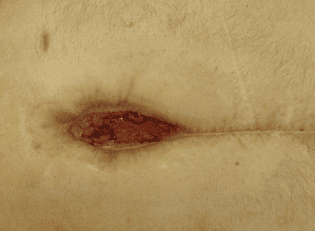
Rò tiêu hóa từ ruột ra thành bụng quanh lỗ rò
2. How is the gastrointestinal fistula after surgery?
2.1. Mass
More or less fistula depends on the fistula location, the internal fistula size and the circulation of the bowel below the fistula.Location: When the fistula is high, such as in the duodenum proximal to the ampulla of Vater or in the first part of the jejunum, the fistula may reach 3 to 4 liters per day. When the fistula is low, in the terminal small intestine or in the colon, the fistula is usually small or very small, sometimes only as permeable. At least because the digestive juices have been absorbed by the bowel above the fistula. Fistula size: When the fistula is large, the fistula can be many liters per day. When the fistula is small, the leakage is usually small. When the fistula occupies all or nearly the entire diameter of the intestine, all the digestive juices follow the leak out. Inferior intestinal circulation: In addition to the location and size of the fistula, the number of fistulas is strongly related to the circulation of the intestine below the fistula. When intestinal circulation is not good, because of obstruction or because of poor motility, the amount of leaky fluid increases markedly.
2.2. Nature
The location of the fistula in determining the nature of the fistula. When the fistula is in the stomach, the fistula has a bluish-gray color of gastric juice. When fistula is in the duodenum, the fistula has a yellow color of bile. When the fistula is in the colon, the incision contains stool. Fistula, in addition to the secretions of the gastrointestinal tract, also contains food. Food can change the nature of the leak, making the location of the leak difficult.3. Symptoms and developments
Gastrointestinal fistula rate:Any suture, a floating mouth in the gastrointestinal tract can be deflated or broken. Swollen, poop can sometimes be predicted during surgery, sometimes it happens unexpectedly. Therefore, after surgery with stitches and floating mouth, they must be monitored daily, in the morning or afternoon or several times a day. Depending on the condition of the gastrointestinal tissue around the suture or the place where the mouth floats, good or bad, depending on the clean or dirty abdominal cavity, the ability to leak and poop is different.
Gastrointestinal leak time:
Fistula usually occurs on the third and fourth day after surgery, also on the sixth or seventh day, but less often. Therefore, with sutures or open mouth surgery, the patient is usually discharged on the eighth day, after the suture is removed from the abdominal wall incision. Leaks may occur later. Gastrointestinal fluid through the puncture site to form a collection of fluid or an abscess. At some point, a collection of fluid or an abscess that finds a way to drain the pus out will form a fistula. Signs in the abdominal wall incision: If there is fluid in the incision site of the abdominal wall or chest wall, if the fluid is small and colorless, it will be difficult to distinguish the fistula from the exudate caused by an infection of the incision. If there is a lot of fluid, there is a gastrointestinal leak. When the incision has a lot of yellow fluid coming out and drenching it, there is definitely a fistula in the upper gastrointestinal tract. Patient's condition: In the early days, when there was not much leakage, the condition did not change much. In the case of large and prolonged fistula, if resuscitation is not timely, the amount of rehydration is not enough, dehydration can be very pronounced, fatigue, sunken eyes, dry skin. The condition can deteriorate quickly, changing daily, sometimes within the same day. Body temperature: May have a fever, may not. Fever is caused by dehydration or infection, or both. Urine output: Except in cases of renal failure, urine output gradually decreases due to inadequate and untimely rehydration. The amount of rehydration must be based on the amount of fluid draining through the fistula and the daily water requirement of the patient's body. Progression of fistula: Many gastrointestinal fistulas develop smoothly, can heal on their own after a few days, without intervention or only gentle interventions such as incision care, aspiration of fistula,... Fistulas in the sac Like duodenal apex after gastrectomy, fistulas of the bowel end-to-end or lateral after intestinal anastomosis are also likely to heal on their own. Many gastrointestinal leaks last for many days and months. Care and treatment work is hard, difficult and expensive. There are also low and small fistulas, which are only replaced by 1-2 times a day, which does not affect the patient's health and activities much.
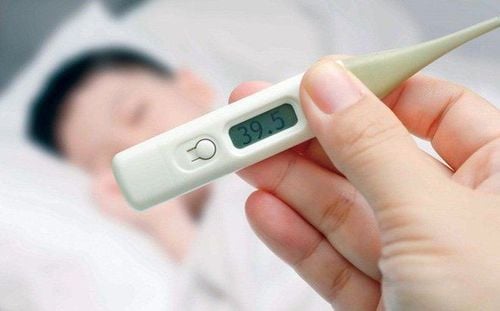
Rò tiêu hóa có thể khiến thân nhiệt thay đổi
4. How does the doctor diagnose gastrointestinal fistula after surgery?
4.1. Leak diagnosis
Review of recent surgical injury, location and extent of injury, surgical difficulties, and procedures or operations performed should be reviewed. When the fistula saturates the gauze or multiple swabs, it must be replaced several times a day to facilitate diagnosis. The yellow color of gauze due to bile infiltration is very valuable for definitive diagnosis. When the amount of fluid in the incision or at the base of the drainage duct is small, there is no yellow color of bile, and it is not lumpy like stool, the diagnosis is difficult. , need close monitoring. If not determined, have the patient drink the colorant. Use colorants. The commonly used colorant is methylene blue. The green color in the fistula indicates whether there is a leak or not and indicates the location of the internal fistula. Leakage after appendectomy, colon surgery, patients often return to the hospital after a while, sometimes months. The most commonly used diagnostic method is a fistula with a barium pump into the external fistula. Imaging the lining of the intestines helps the doctor diagnose a fistula.4.2. Diagnosis of leak site
First of all, based on the nature of the last surgery. The latter is based on the color and nature of the leak. For a more precise location of the leak, have the patient drink methylene blue. Blue color appearing after 5-10 minutes is high leakage, after 2-3 hours is low leakage. The location of the fistula, the volume of the fistula, the abdominal wall where the fistula is located, and the general state of the body are the bases for choosing the time of surgery. Above is some information about symptoms and how to diagnose gastrointestinal fistula after surgery. Please follow the website: Vinmec.com regularly to update many other useful information.Please dial HOTLINE for more information or register for an appointment HERE. Download MyVinmec app to make appointments faster and to manage your bookings easily.
References:Nguyen Dinh Hoi. Gastrointestinal fistula, Gastrointestinal surgery. Medical Publishing House 1994, 225-253. Nguyen Hoang Bac. Colonic lavage during surgery. Thesis of Master of Science in Medicine and Pharmacy, University of Medicine and Pharmacy, Ho Chi Minh City 1997. Nguyen Trung Tin. Duodenal fistula after traumatic surgery and duodenal wound: clinical features and management attitude, Practical Medicine 2001, 401, 8:15-18.




